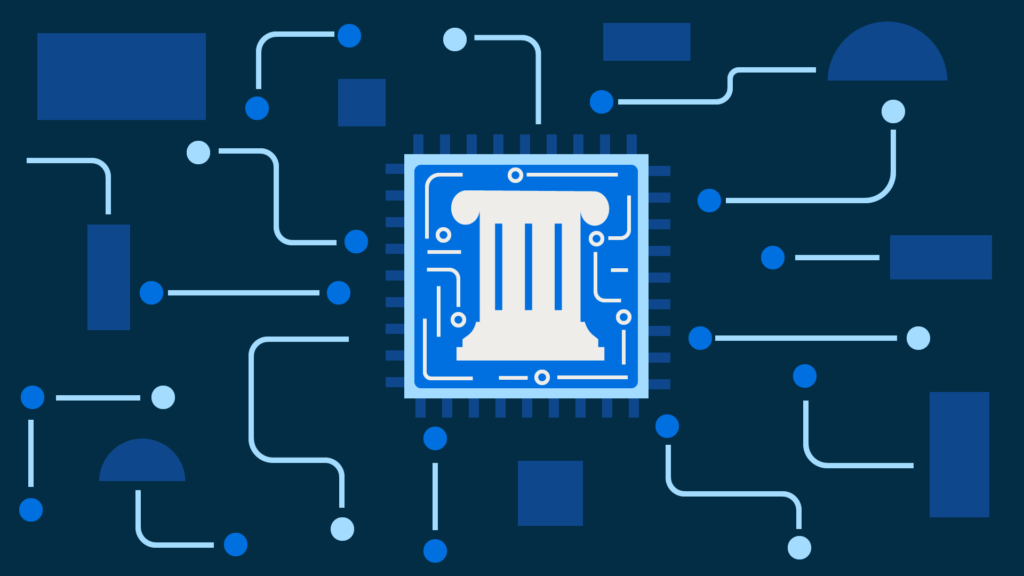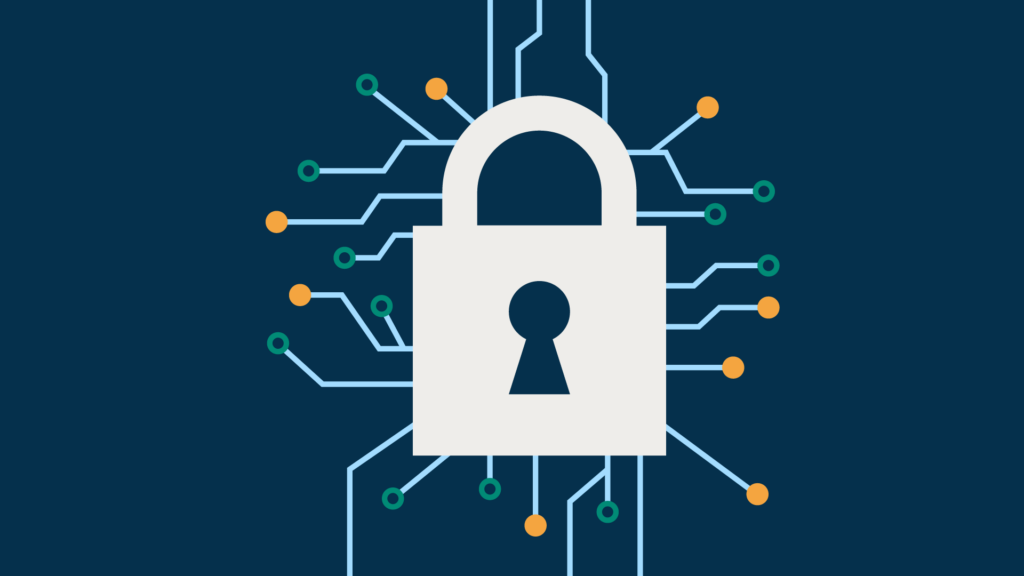In recent years, the rapid evolution of artificial intelligence (AI) has transformed almost every industry, ushering in a new era of efficiency and innovation.
Even in law, which is traditionally slower to adopt new technology, there is already an increasing number of tools designed to help legal professionals with everyday work, from helping with legal research to document reviews.
However, this technological revolution has also raised a host of challenges that demand careful consideration, from how we leverage the outputs that AI tools give us to the nature of the data sets these tools are trained on.
In this blog post, we’ll delve into use cases for artificial intelligence in legal work and the most common legal issues with AI.
Enhance your legal practice with Clio Duo, Clio’s secure, AI-powered solution that helps increase productivity and efficiency, transforming the way legal professionals work
The impact of AI on legal practices
With one in five lawyers already using the technology, AI is revolutionizing many areas of legal practice. For example, AI tools can:
- Streamline legal research by quickly analyzing vast datasets.
- Automate document analysis and review processes, expediting tasks such as contract review, due diligence, and e-discovery.
- Assist in generating legal documents, briefs, and contracts.
- Providing instant responses to routine legal queries, offering client support, scheduling appointments online, and facilitating legal communication.
Understanding the legal issues surrounding AI

As AI becomes increasingly integrated into various aspects of our lives, the legal framework surrounding it has in just a few years already become a complex web of risks and regulations.
Most types of AI software work by “learning” from data, recognizing patterns using machine learning and then producing outputs based on user prompts. Because of this, there are already legal issues around AI—from biased or incomplete data sets to poorly designed AI models, a whole host of factors could lead to professional liability issues for lawyers who aren’t using AI properly.
There’s been no shortage of AI and legal news headlines, and even the largest global brands aren’t safe. Microsoft and OpenAI are contending with several lawsuits around AI and copyright, and lawyers themselves aren’t immune to the improper use of AI.
What is the legal risk associated with Gen AI models?
Most generative AI tools today have disclaimers saying that the tools cannot guarantee the accuracy of the answers and content they generate—essentially, use at your own risk.
The liability is with the user, and it is your responsibility to be aware of potentially false statements generated by the AI, bias in training data, and data privacy. For example, many AI tools state that they can use your prompts and inputs as training data—which is why it is risky to input confidential client information into, say, ChatGPT.
Adherence to rapidly evolving regulatory frameworks, transparency issues, and ethical considerations pose additional legal challenges. The EU, for example, recently passed new rules to regulate generative AI tools. Industries that are regulated more strictly, such as healthcare, may well see their own specific ethical guidelines for the use of AI.
For legal practices, it’s imperative to mitigate these legal risks as they explore different ways to use artificial intelligence in legal work.
Accuracy
Accuracy is another significant issue when it comes to AI. In fact, the 2022 ABA Legal Technology Survey Report found that accuracy is the top barrier preventing many lawyers from adopting AI.
Most AI software providers do not advertise how their algorithms are built—they are often “black boxes” and it can be challenging (or impossible) to understand how they arrive at their outputs and whether the answers they generate are factual.
This is especially important in the legal field, where decisions can have significant consequences on people’s lives. Until AI companies are able and willing to provide some degree of transparency about the accuracy of their tools, this is likely one key factor that will hold back the legal industry’s adoption of AI.
AI bias and fairness
One of the most pressing concerns in the legal industry, is the issue of AI bias. As AI systems are trained by humans on vast data sets, they inherit both human biases and biases that are present in the data.
While legal professionals can’t impact the bias or fairness of an AI tool, you can recognize that bias is present and review AI solutions carefully to find out whether they are mitigating bias in how the product works.
Implicit bias in training data
Bias often originates from historical data used to train AI models. If the training data reflects societal biases, the AI system can perpetuate and amplify those biases in its predictions or decisions.
Some AI tools will explain how their solutions attempt to mitigate bias, including how they address bias within training data, how they train human labelers, and so on.
Data labeling challenges
Accurate labeling of data for training is crucial for addressing bias because these labels form part of the “learnings” that an AI tool uses to produce outputs autonomously later.
Almost every type of AI solution will require data labeling—autonomous or AI-driven vehicles need to label safety concerns on the road, for example, while AI sentiment analysis platforms need to label examples of positive and negative sentiments during conversations.
Human labelers may unintentionally introduce their biases into the process, creating challenges in creating bias-free training datasets.
Data privacy and security concerns

As AI relies heavily on data, the protection of sensitive information is crucial. It is one of the biggest legal issues with AI, and if your practice is considering using AI tools, the vendors you choose should be able to illustrate how they address each of these issues.
Exposing sensitive data
AI tools like ChatGPT often work by ingesting information that’s entered by users. If users unknowingly input sensitive information, it raises concerns about the potential exposure or unauthorized access to personal and confidential data.
And as lawyers are bound by a duty of confidentiality, they do need to be certain that they are not inadvertently exposing confidential client information—or that they’re creating policies to ensure that confidential client information is not being fed to AI models.
Third-party data sharing
Collaboration and data-sharing practices among legal entities and third-party AI service providers could pose risks if not managed correctly, potentially compromising the confidentiality of client information. For example, in 2023, Microsoft’s AI research division accidentally exposed cloud-hosted data, and many companies are building AI solutions on top of OpenAI’s ChatGPT, which means that any customer data or proprietary data they pull into those AI tools may also be shared with OpenAI—without their customers’ knowledge.
Did you know? Clio Duo is a secure AI for law firms where no AI models are ever trained on your data, and access is limited to authorized information across your firm. It ensures privacy and security for your firm’s and your client’s data.
Lack of explainability
The inherent complexity of some AI models, especially deep learning models, can make it challenging to explain how decisions are made. This lack of transparency is generally referred to as the “black box” and impacts organizations across different industries.
Data retention policies
Establishing clear data retention policies is crucial to avoid the unnecessary storage of personal information. Like any other software solutions, AI systems have to adhere to these policies to minimize the risk of unauthorized access and misuse of data.
Intellectual property and AI

The intersection of AI and intellectual property (IP) raises new questions and challenges, including the creation of AI-generated content and the patentability of AI innovations.
Ownership and authorship
Determining the rightful owner and author of AI-generated content raises complex questions. Up until now, intellectual property law recognizes only human creators.
For example, in 2023, the United States Copyright Office ruled that the creator of Zarya of the Dawn, a comic book that was created using art generated by Midjourney (an AI tool), was entitled to the copyright for the book as a whole. However, the creator was not entitled to the copyright for the images themselves because Midjourney doesn’t offer humans enough control over the artistic process of creating the images.
Public domain and fair use
Determining the boundaries of fair use and what constitutes transformative use has been traditionally difficult to legally assess. Taking the spirit of “fair use” into consideration, organizations such as Creative Commons have argued that fair use should permit using copyrighted works as training data for generative AI models.
Public policy and legislation gaps
Current copyright and patent laws were not designed with AI in mind, and while policymakers are working to adapt laws to the rapidly evolving landscape of AI—often at the behest of AI companies’ leaders themselves—most governments globally still have yet to establish AI regulations.
Liability and accountability in AI
Determining liability and accountability in cases involving AI presents a unique set of challenges. Currently, legal regulations still have yet to catch up to how far AI tools have advanced, which makes it difficult to use the following to determine liability and accountability:
Identification of responsible parties
Clarifying who is legally responsible is extremely challenging with AI, largely because multiple entities contribute to the development, deployment, and maintenance of the AI system. This “responsibility gap,” Filippo Santoni de Sio and Giulio Mecacci argue, is a result of at least four interconnected problems that are inherent in the use of AI tools.
Human oversight and control
On a related note, this notion of responsibility is why it is often important to prescribe human oversight and control over an AI process or solution.
Jovana Davidovic from the University of Iowa differentiates between responsibility and accountability, and suggests that while it is possible to assign accountability to technological solutions, responsibility assignments, “at least for now, require a human in the loop… because as it stands we can’t hold machines responsible in any meaningful sense.”
Remember: at the end of the day, if an accident or error occurred due to inadequate human supervision, the responsibility would then be attributed to the individuals or organizations responsible for monitoring and controlling the AI.
Were you aware of these AI legal issues?
Navigating the use of AI from a legal lens demands a nuanced understanding of not only the law, but also the technology itself—how it is designed, how it generates output, and so on.
For legal professionals, there are countless risks, from the ethical considerations of bias to the practical challenges of data privacy. The landscape is still evolving, and the legal field has a significant role to play as it paves the way for responsible innovation and the development of a legal framework that fosters trust in this transformative technology.
With Clio Duo, Clio’s AI-powered partner, lawyers can use AI securely and ethically to increase productivity and efficiency. Embedded within Clio’s practice management system, Clio Duo taps into your firm’s specific data, providing relevant, accurate results tailored to your needs. Book a demo today to discover how Clio Duo can accelerate the way you work.
Legal AI Virtual Summit 2025
Watch Clio’s Legal AI Virtual Summit to explore practical AI strategies for law firms of all sizes. Learn how to use AI securely, protect client data, and enhance your practice.
Watch now

